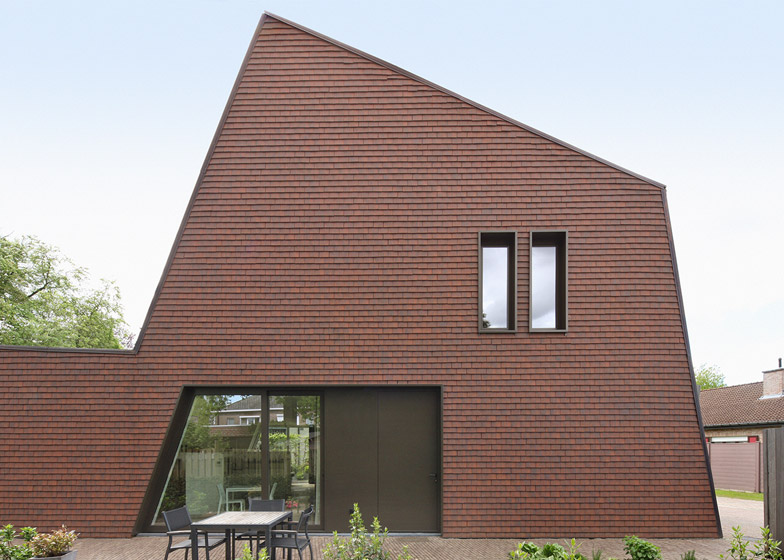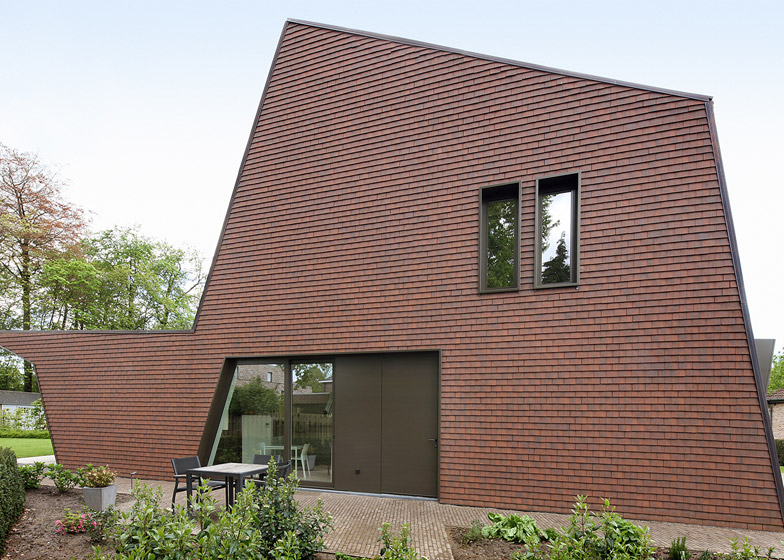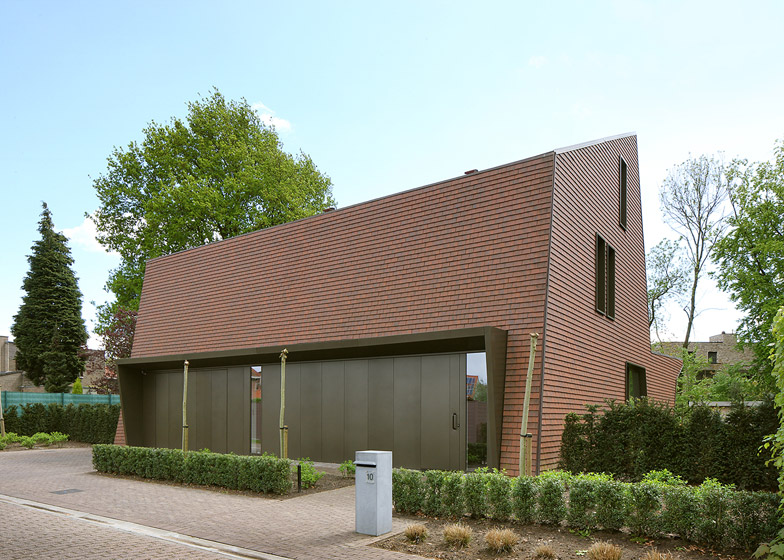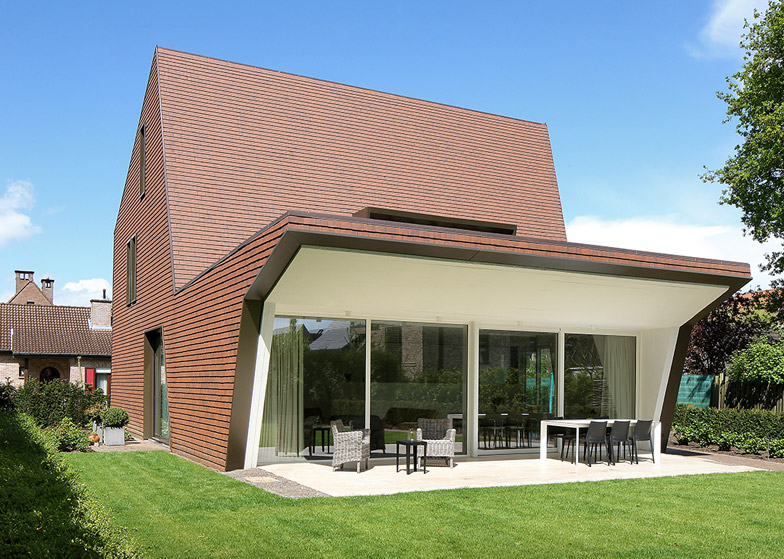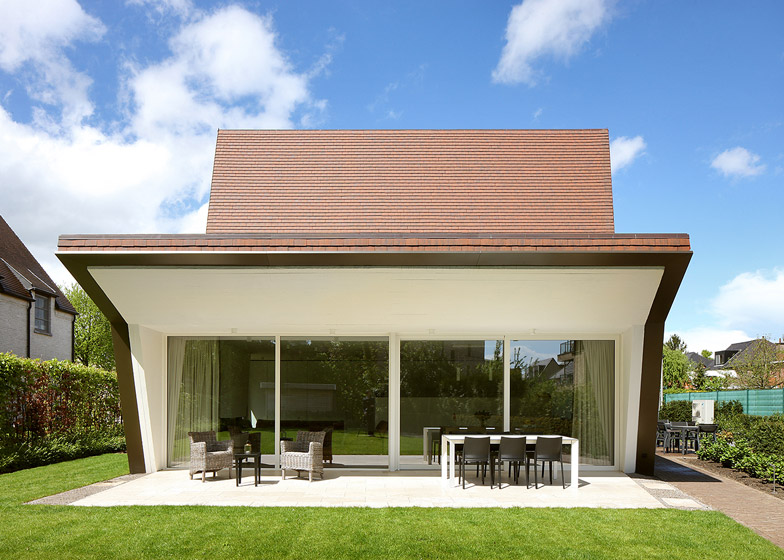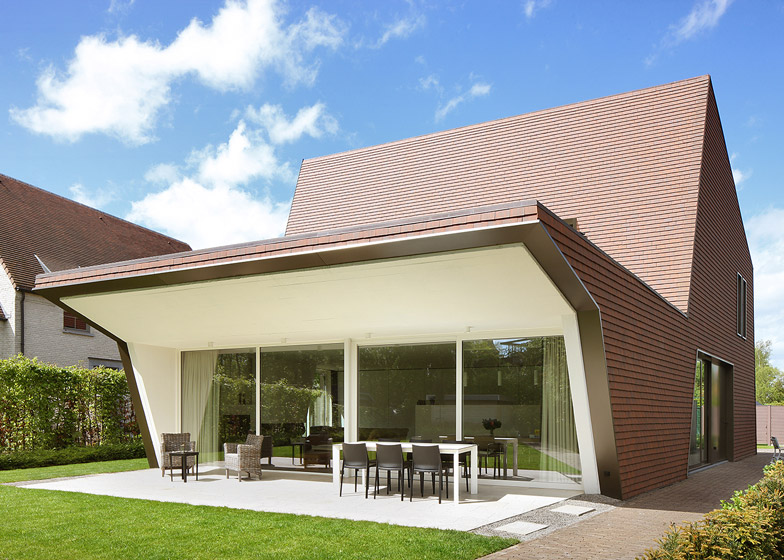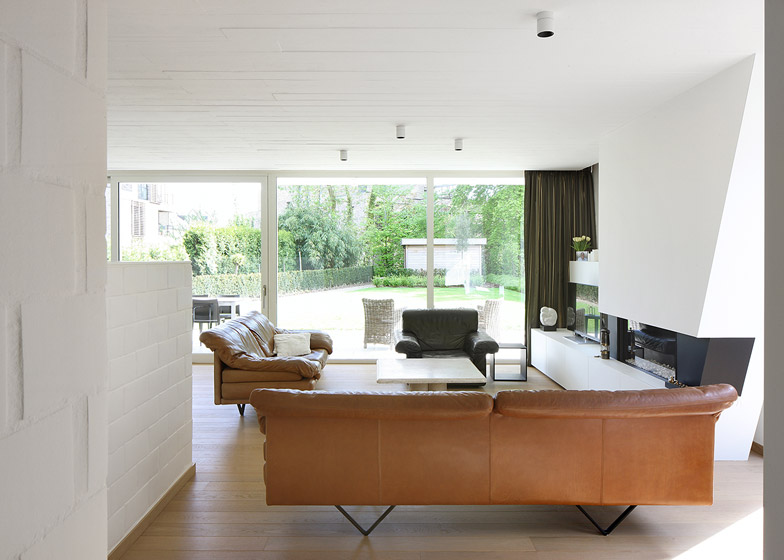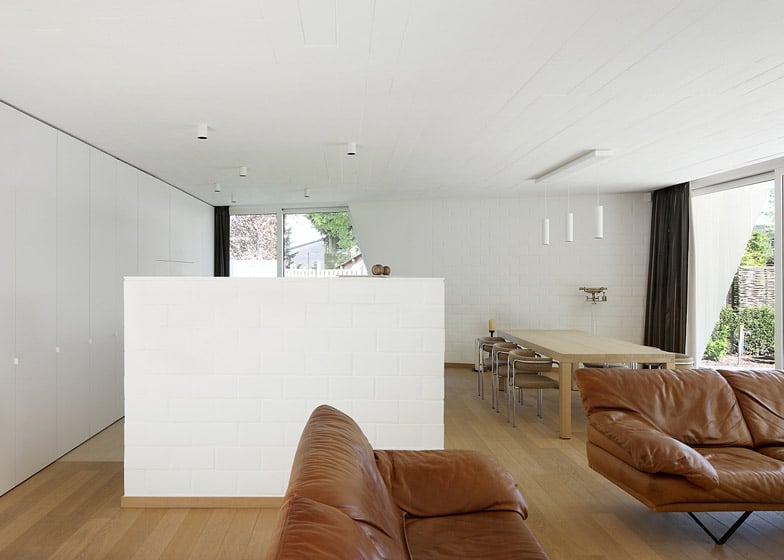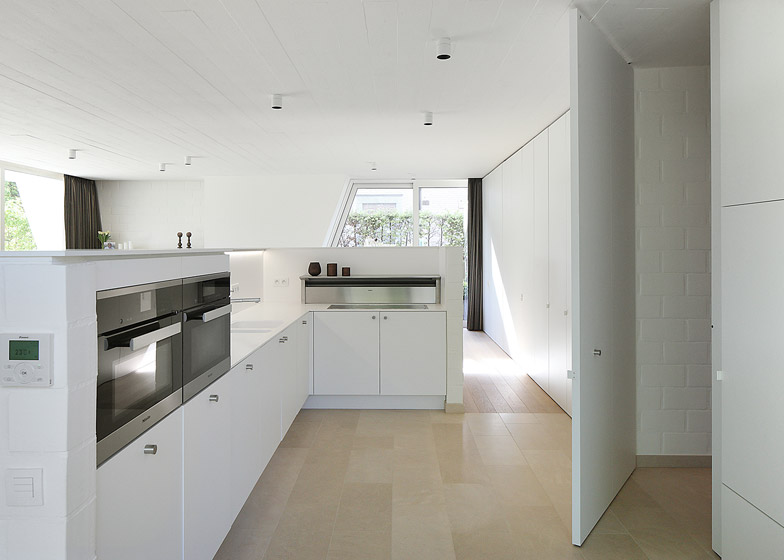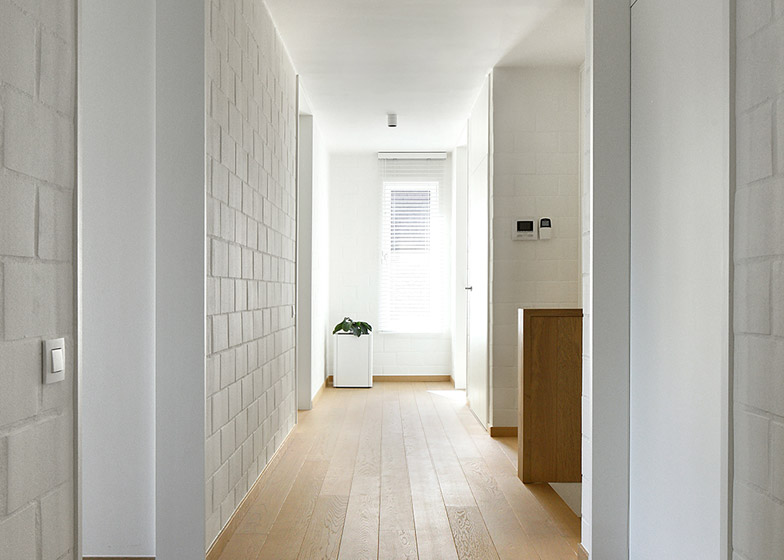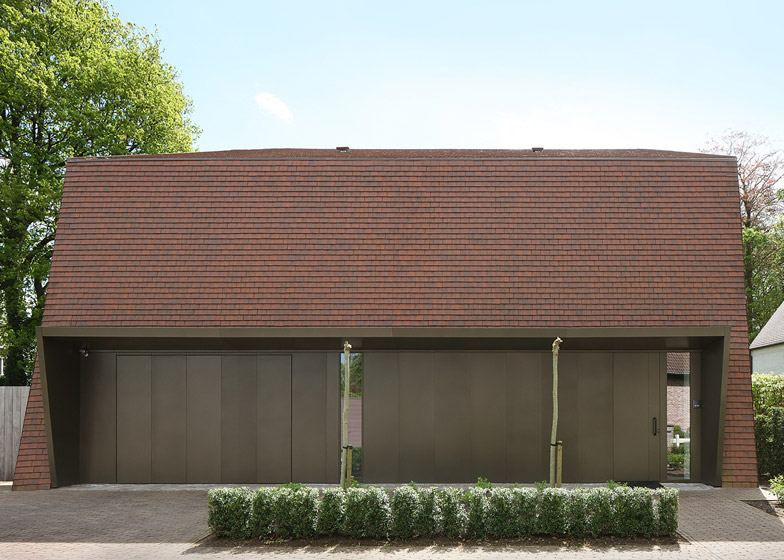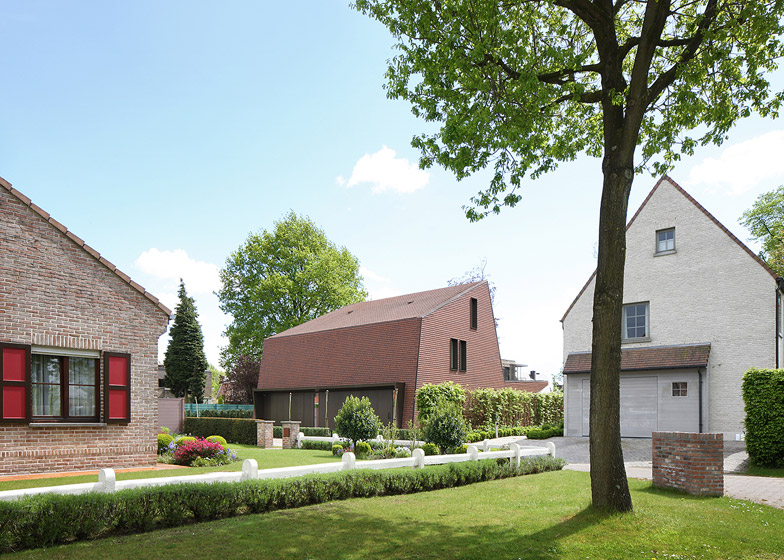The asymmetric profile of this suburban house in Belgium was generated directly from the permitted building heights prescribed by local planning regulations (+ slideshow).
Designed by Belgian architect Dieter De Vos, the two-storey Villa Willemsdorp is located in a residential neighbourhood in De Pinte, south-west of Ghent.
The area is typified by traditional gabled houses – a style that De Vos was keen to avoid.
He instead opted for a more abstracted gable, generated by looking at the right-to-light privileges of neighbouring buildings and using them to work out maximum height allowances at different points around the site.
The architect was also careful to adhere to local planning guidelines regarding shape and massing.
"In order to give the house character within this context, the building volume touches the limits of the regulations concerning volume and roof shape," he explained. "This free interpretation leads to a sculptural volumetric composition with unexpected sloping surfaces."
De Vos previously completed another house in De Pinte, which has brick walls and arched windows. In contrast, the architect chose to clad the entirety of Villa Willemsdorp in red ceramic tiles that are usually used for roofing.
The houses's entrance is located on the north-facing street facade, as part of a row of metal panels that also integrates the garage doors. On the opposite side of the building, a long stretch of glazing opens the building out to the garden.
Other details include a dormer window that extends across a flat section of the roof, and a pair of angular floor-to-ceiling windows positioned on opposite walls.
"The backward-leaning street elevation has quite an introverted appearance, while the house opens up on the other elevations with a completely glazed garden elevation at the terrace, a pronounced dormer window and a constellation of smaller incisions on the side elevations," added De Vos.
Inside, the ground floor of the 275-square-metre building is largely taken up by the open-plan living and dining room. The kitchen is tucked away at the back, while the dining and lounge areas sit side by side.
A wall of cupboards runs along one side of the space, creating plenty or storage space.
Upstairs, there are two bedrooms, the family bathroom and a small study.
Breeze-block walls have been left uncovered throughout the house, but are painted white. The same goes for the exposed concrete ceilings, which reveal the texture of their timber formwork.
"The plank formwork of the concrete ceiling is mirrored by the oak floorboards," said De Vos.
Sustainable heating is provided by a geothermal heat pump, which is connected to a system of underfloor heating. There are also solar panels on the roof, creating energy used for heating water.
Photography is by Filip Dujardin.

